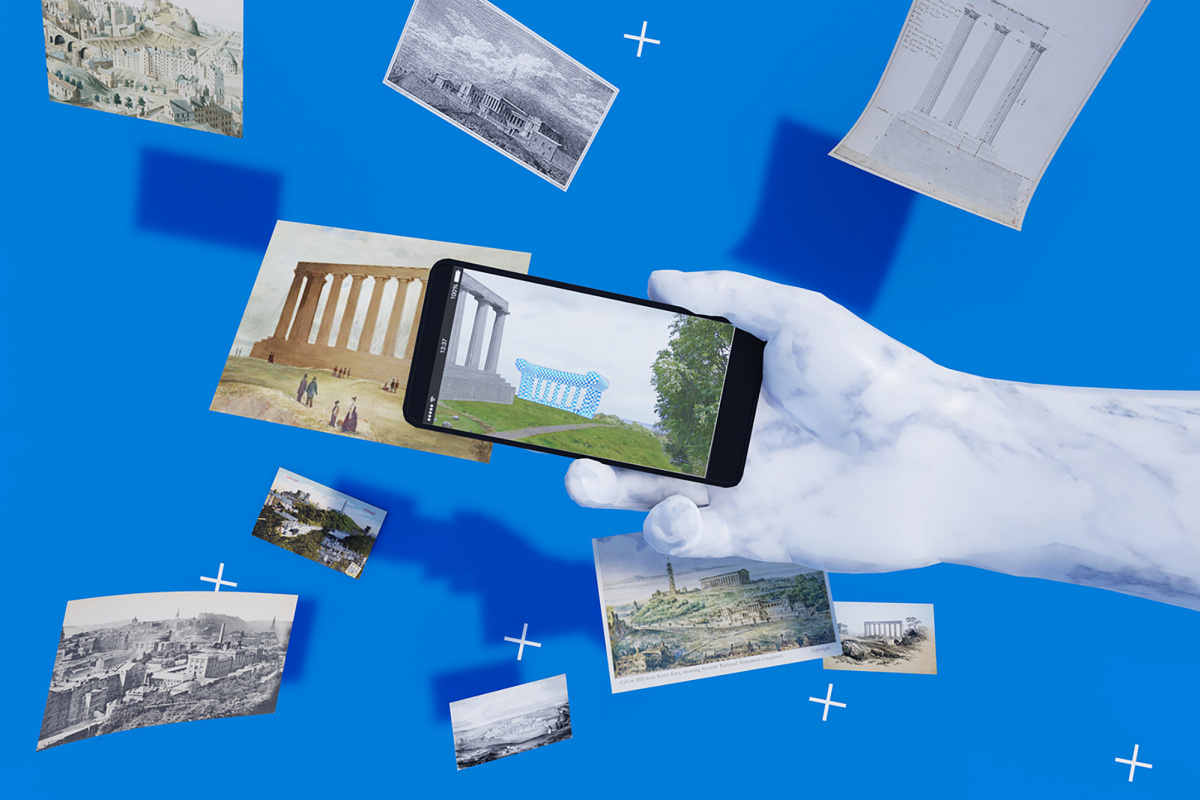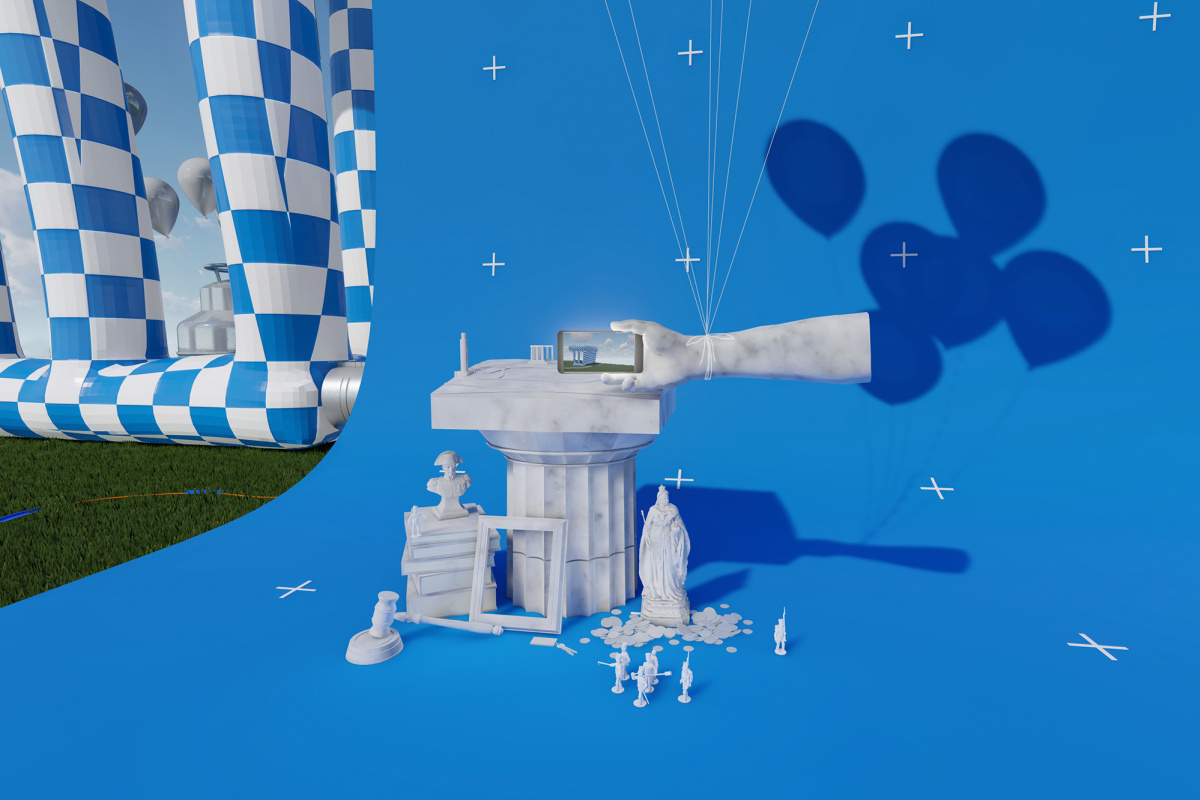Pnue History: Re-completing the National Monument of Scotland
13 Jun—24 June (12 dates)
Edinburgh & The Lothians Installation

Event Summary
This project re-completes the National Monument of Scotland on Calton Hill in Edinburgh, reviving various historical initiatives to complete the seemingly “unfinished” monument through a series of inflatable pavilions experienced digitally on a mobile AR platform and through social media filters.
Time
Anytime, June 13-24
Date(s)
13 Jun—24 June
Location
Calton Hill, Edinburgh EH7 5AA, United Kingdom
View on Google Maps
Organiser
Ian Erickson, Remi Mcclain, Oliver Moldow
Social
Experience pnue histories of the National Monument of Scotland!
Walk to the field opposite the National Monument of Scotland on Calton Hill. Click the links below on mobile to prompt a download/launch of the Adobe Aero Augmented reality app. Locate a horizontal surface on the ground by panning your phone around and click on the identified surface to place the scheme, you will then be able to move around and experience the installation.
Catacombs https://adobeaero.app.link/0JcVBq9p4gb
Gallery https://adobeaero.app.link/QxI1iJzu4gb
Inversion https://adobeaero.app.link/cUTkL59w4gb
—
Beginning as a popular 1882 proposal to build no less than an exact facsimile of the ancient Greek Parthenon to commemorate the fallen Scottish soldiers of the Napoleonic Wars, efforts to build the monument were quickly galvanized by an Act of Parliament. By 1823, the Grand Tour trained Neoclassical architect Charles Robert Cockereland, and the father of the Ancient Greek revival William Henry Playfair had begun the monument's design in earnest as part of their efforts to solidify Edinburgh’s status as the "Athens of the North." The pair was quickly nicknamed Ictinus and Callicrates after the co-architects of the original Parthenon. However, unlike the ancient Greek duo who benefited from a war treasury surplus, the Scotsmen had to curb their architectural ambitions as building costs increased and purses tightened. Construction ended in 1828, with only a fragment of the initially proposed full Parthenon crowning Calton Hill, a perceived failure so severe that the monument is still referred to as "Edinburgh's Disgrace" and "the Pride and Poverty of Scotland'' today.
Yet, the architect's contract documents reveal that the monument was built exactly as designed with not so much as a dashed line to anticipate future construction—a ready-made ruin. Despite the discrete monument being “complete in itself” in the words of architectural historian Charles McKean, there have been many failed national building initiatives to "complete" the apparently unfinished structure, including as a national gallery (1907), a parliament building (1908), a hall of prayer flags (2004), and a full Parthenon replica (2017). Clearly, the ruin's fragmentary state continues to be a powerful projective device for shifting national identities.
This installation addresses the site’s complex history of Neoclassicism, national identity, and ruin by way of a series of digital inflatable pavilions that temporarily and virtually “complete” the monument according topnue aesthetic principles. Statistical membranes of white and blue pixels strain against simulated air in stark contrast to the hard rough Craigleith stone of the existing structure. Earlier proposals to complete the monument are revived and rendered in digital soft body geometries: mirroring the existing structure to define the extents of a full Parthenon, floating overhead like many strange omens, or sagging as they let the air out of inflated busts of the western canon. The project blows up history, initiating a process of unlearning the entrenched values of the western Neoclassical tradition through a digital pageant that collides the classical with the contemporary in a spectacle of mutual absurdity. The playful follys are experienced through a mobile AR platform and social media filters that sidestep the government regulation of the site, pandemic-era travel restriction, and other material and fiscal constraints. Just like in the tradition of radical physical architectural inflatables—Ant farm, Haus-Rucker-Co—the digital installation appropriates and produces space cheaply and without permission, using minimum surfaces to maximum effect in an aesthetic institutional critique. Here, we are reminded of Banham’s first encounters with inflatables chronicled in his essay “Monumental Wind Bags,” for a limited time on Calton Hill themonumental meets the wind bag in an intangible exchange of image, history, and computation.


